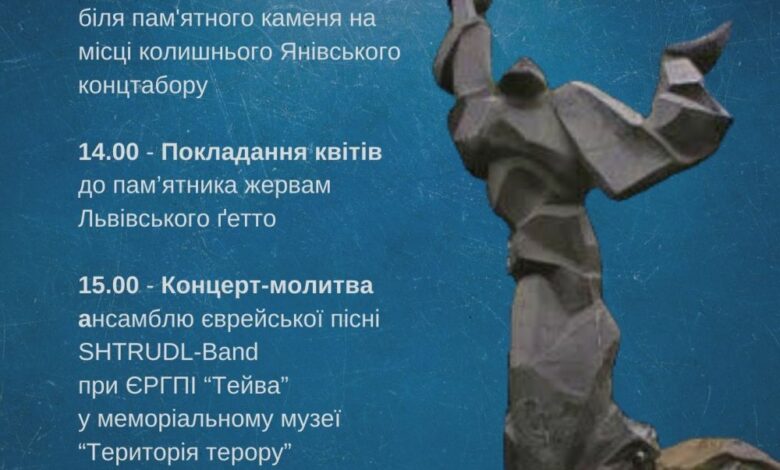
This year marks the 80th anniversary of the liquidation of the Lviv ghetto and Yaniv concentration camp. So on Sunday, November 12, Lviv will host events dedicated to commemorating the victims of the Holocaust.
In particular, at 1:00 p.m., flowers will be laid at the memorial stone on the site of the former Yaniv concentration camp, and at 2:00 p.m., flowers will be laid at the monument to the victims of the Lviv ghetto. Afterwards, at 15:00, there will be a concert-prayer by the SHTRUDL-Band Jewish song ensemble (in the Memorial Museum of Totalitarian Regimes “Territory of Terror”, Barak No. 2).
Organizers: the Jewish religious community of progressive Judaism “Teiva”, the All-Ukrainian Jewish Charitable Fund “Hesed-Arye” and the Memorial Museum of Totalitarian Regimes “Territory of Terror”.
certificate
According to researchers, the Lviv ghetto was the largest in the USSR and the third largest in Eastern Europe. Created in the poorest district of Lviv. During the two years of its existence, more than 136,000 Jews passed through the ghetto.
Life in the ghetto was difficult, along with terrorist actions and pogroms by the occupation authorities, hunger and unsanitary conditions prevailed. The ghetto lacked water and food, medical care, and housing. Official supply norms in the winter of 1941-1942 per adult were: 700 gr. bread per week, 400 gr. flour and 100 gr. of sugar per month.
The Germans established total control in the ghetto. Jews could not move freely through the city, use property, public transport, or visit public places. They had the right to leave the precinct only when they went on duty at the Yaniv concentration camp and to other places.

